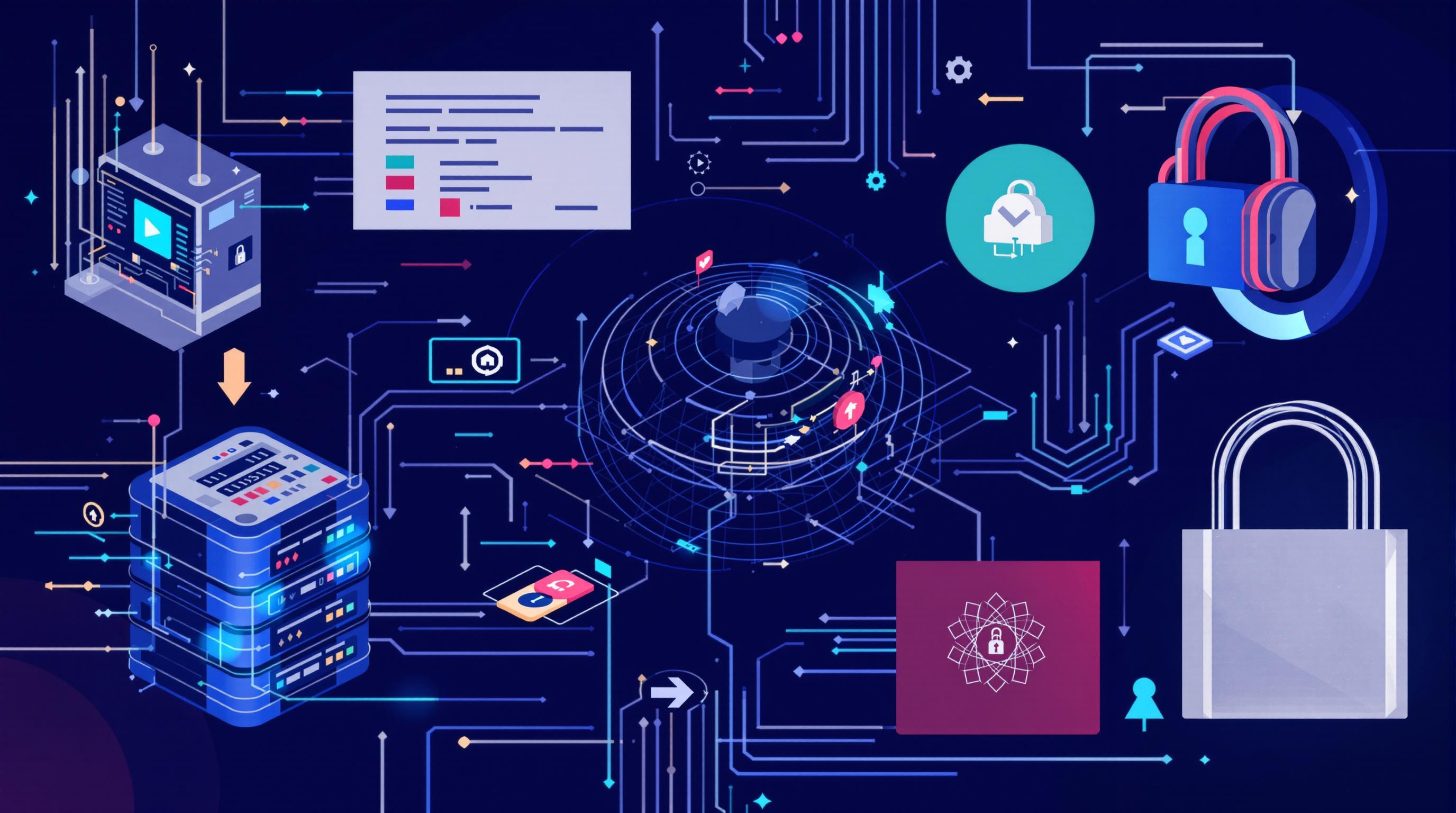Related Articles
- Unveiling the Silent Effects of Malware Residue on IoT Devices and What It Means for Your Connected Home Security
- Top 6 Game-Changing Email Security Suites Released Since 2019 That Actually Stop Cyber Trickery
- The Hidden Impact of AI-Driven Voice Assistants on Your Device’s Safety: Risks Nobody Talks About
- Top 6 Stealth Encryption Products Redefining Data Privacy You Haven’t Heard About Since 2019
- Exploring the Influence of Wi-Fi Radiation on Human Sleep Patterns and Cognitive Health in Modern Living
- Top 8 Stealth Malware Cleaners from the Past 5 Years That Outsmart Evasive Threats
Top 7 Game-Changing Solutions Launched Since 2019: A Comprehensive Review and Ranking
Top 7 Game-Changing Solutions Launched Since 2019: A Comprehensive Review and Ranking
Top 7 Game-Changing Solutions Launched Since 2019: A Comprehensive Review and Ranking
Since 2019, the technology and innovation landscape has witnessed several breakthrough solutions that have significantly impacted various industries. From artificial intelligence advancements to sustainable energy innovations, these game-changing technologies are reshaping the way we live and work. This article reviews and ranks the top seven solutions based on their innovation, adoption, and transformative potential.
Each section below presents an in-depth look at one of these pioneering solutions, detailing its development, key features, and broader implications. This comprehensive review aims to provide readers with insights into how these innovations are influencing markets and societies worldwide.
The ranking considers various factors including technological novelty, user impact, scalability, and contributions to solving pressing global challenges. The solutions covered span multiple domains, illustrating the wide-reaching nature of recent technological progress.
1. GPT-3: Advanced Language Model by OpenAI
Launched in 2020, GPT-3 (Generative Pre-trained Transformer 3) marked a significant leap in natural language processing technology. With 175 billion parameters, GPT-3 demonstrated an unprecedented ability to generate human-like text, enabling applications ranging from automated content creation to improved chatbots.
The model’s versatility has spurred innovation across industries, including education, customer service, and creative arts. Developers have utilized GPT-3 APIs to design tools that enhance communication, streamline workflows, and enable novel interactive experiences.
Critically, GPT-3 has also raised important discussions around AI ethics, biases in training data, and responsible deployment. OpenAI’s active engagement with stakeholders reflects the broader challenge of integrating powerful AI systems safely into society.
Source: OpenAI GPT-3 Official Release
2. CRISPR-Cas9 Gene Editing Advances
Although CRISPR technology emerged prior to 2019, key advances since then, including improvements in precision and delivery methods, have greatly expanded its therapeutic potential. Newer gene-editing treatments targeting genetic disorders have entered clinical trials with promising early results.
This progress has accelerated the potential for cures in diseases like sickle cell anemia and inherited blindness, highlighting gene editing’s transformative promise in medicine. Researchers continue to refine the tools to minimize off-target effects and enhance safety.
Ethical debates surrounding germline editing and genetic privacy remain central as the technology advances. International collaboration is ongoing to develop governance frameworks that balance innovation with societal values.
Source: Nature Communications, CRISPR Developments 2020
3. Tesla’s Full Self-Driving (FSD) Beta
In late 2020, Tesla released its Full Self-Driving (FSD) Beta software to select users, marking a bold step toward consumer-level autonomous driving. The software leverages neural networks and real-time data to navigate complex urban environments without driver input.
While still requiring human supervision, FSD Beta has demonstrated increasing capability in adaptive driving and obstacle avoidance. Its iterative updates driven by fleet data collection accelerate development speed compared to traditional automotive R&D.
Despite controversies over safety and regulatory approval, Tesla’s approach has pushed the entire automotive industry closer to widespread autonomous vehicles, promising significant shifts in transportation and logistics.
Source: Tesla Autopilot & FSD Overview
4. Solid-State Batteries for Electric Vehicles
Since 2019, several companies have made notable strides in developing solid-state battery technology, which offers higher energy density and improved safety over traditional lithium-ion batteries. These batteries are expected to revolutionize electric vehicle (EV) ranges and charging times.
The move toward solid-state designs addresses some key limitations in current EV technology, helping to alleviate range anxiety and enhance vehicle lifespan. Manufacturers like Toyota, QuantumScape, and others have reported promising prototype results and partnerships.
Mass production challenges remain, but the ongoing progress positions solid-state batteries as a cornerstone for next-generation electrification in transportation and portable electronics.
Source: U.S. Department of Energy Solid-State Battery Report
5. mRNA Vaccine Technology
The rapid deployment of mRNA vaccines during the COVID-19 pandemic starting in 2020 exemplifies a medical breakthrough with global impact. Pfizer-BioNTech and Moderna leveraged mRNA platforms to quickly develop effective vaccines that helped control the pandemic.
This technology allows for faster design and manufacturing compared to traditional vaccines, and its success has stimulated wider exploration into mRNA-based treatments for other infectious diseases and cancers.
Beyond immediate pandemic response, mRNA vaccines represent a versatile platform likely to inform future preventative medicine, offering adaptability against emerging pathogens.
Source: CDC on mRNA COVID-19 Vaccines
6. 5G Network Rollouts
Beginning in earnest in 2019 and accelerating through 2021, 5G wireless networks have been deployed worldwide, delivering faster data speeds and lower latency than previous generations. This advancement underpins emerging applications including IoT, smart cities, and enhanced mobile broadband.
The increased bandwidth and responsiveness support technologies like augmented reality, autonomous vehicles, and real-time remote control of machinery, driving digital transformation across industries.
Despite infrastructure and regulatory hurdles, 5G’s impact is pivotal in connecting devices and enabling next-level communication networks for the digital economy.
Source: Qualcomm 5G Technology Overview
7. Neuralink Brain-Machine Interface
Announced and progressively developed since 2019, Neuralink aims to create high-bandwidth brain-machine interfaces (BMIs) for medical and eventually consumer applications. The technology involves implanting flexible electrodes capable of reading and writing neural signals.
Potential uses include restoring motor function in paralysis, treating neurological disorders, and enabling direct neural interaction with computers. Demonstrations have included primates controlling external devices with their thoughts.
While still in early stages, Neuralink pushes the frontier of human-computer interaction and raises profound ethical questions about neuroprivacy and augmentation.
Source: Neuralink Official Site
8. Sustainable Packaging Innovations
Since 2019, there has been significant progress in sustainable packaging materials designed to reduce plastic waste and carbon footprint. Innovations include biodegradable composites, edible packaging, and advanced recycling technologies.
Major corporations and startups alike have adopted such materials, responding to regulatory pressures and consumer demand for environmental responsibility. These developments aid in tackling pollution and promoting circular economy principles.
While challenges in scalability and cost remain, the momentum behind sustainable packaging represents a critical shift toward eco-friendly consumer products.
Source: Journal of Cleaner Production on Sustainable Packaging
9. Quantum Computing Milestones
Quantum computing has made notable strides post-2019, with companies and research institutions achieving unprecedented qubit counts and error correction advancements. Google, IBM, and others have showcased increasingly complex quantum algorithms.
Although still not widely practical for commercial use, quantum processors are beginning to demonstrate potential advantages in optimization, cryptography, and materials science simulations.
Ongoing research focuses on making quantum systems more stable, scalable, and accessible, hinting at future breakthroughs that could revolutionize computing paradigms.
Source: IBM Quantum Computing
10. Autonomous Drone Delivery Systems
Commercial deployment of autonomous drones for delivery has expanded significantly since 2019, led by companies like Amazon Prime Air and Zipline. These systems use AI navigation and flight planning to deliver goods efficiently over short distances.
Applications range from medical supply delivery in remote areas to urban package delivery, reducing delivery times and emissions compared to traditional methods. Regulatory adaptation has been key to enabling wider adoption.
The technology promises to transform logistics infrastructure, particularly in underserved regions, and paves the way for integration with smart city ecosystems.
Source: Zipline Drone Delivery




